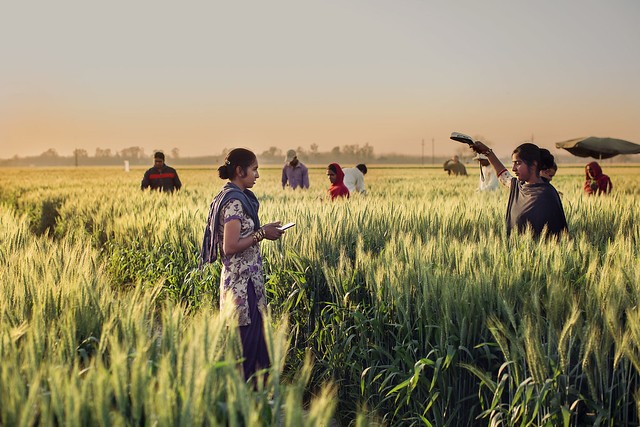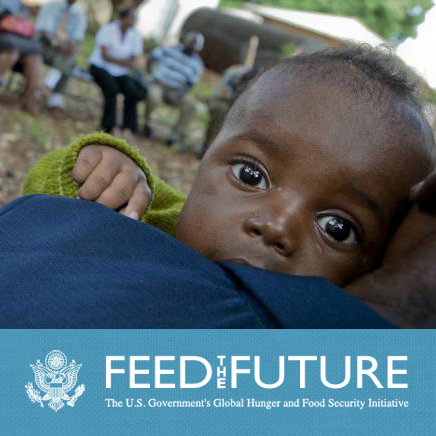- What We Do
- Agriculture and Food Security
- Democracy, Human Rights and Governance
- Economic Growth and Trade
- Education
- Environment and Global Climate Change
- Gender Equality and Women's Empowerment
- Global Health
- Humanitarian Assistance
- Transformation at USAID
- Water and Sanitation
- Working in Crises and Conflict
- U.S. Global Development Lab
Speeches Shim

This page houses strategies, guidance and reports that relate to the Global Food Security Act of 2016 and USAID’s long-term food security efforts. Scroll down for a list of links for quick access.
Background
The food price spikes of 2007 and 2008 were a watershed moment for global food security. Costs of staple foods like wheat, rice and maize skyrocketed, exacerbating hunger and poverty in vulnerable areas and pushing the number of hungry people in the world to more than 1 billion.
The international community rallied together to tap into the transformative power of agriculture to end global hunger and poverty. The United States pledged to invest new resources in global nutrition and food security, which leveraged billions from other donors.
The U.S. contribution to this global effort came to be known as Feed the Future, a whole-of-government initiative, led by USAID, that brings together the private sector, the global science and research community, donors, partner country governments, civil society and America’s agricultural expertise in pursuit of a common goal to end global poverty, hunger and malnutrition. The initiative places a special focus on reaching smallholder farmers and their communities.
The Global Food Security Act of 2016 (GFSA) codified Feed the Future’s proven approach, and it continues to serve as a call to action and represent sustained support for U.S. efforts to end global hunger. Through the GFSA, the United States has bolstered Feed the Future by strengthening its accountability and transparency mechanisms and deepening interagency engagement. In 2018, the GFSA was reauthorized through 2023.
Guided by the U.S. Government’s Global Food Security Strategy, Feed the Future is strengthening agriculture-led growth, resilience and nutrition in 12 target countries around the world. The resulting impact of these efforts helps to protect and accelerate progress in target countries as they advance in their journeys to self-reliance.
U.S. Government Global Food Security Strategy
- Developed in response to the Global Food Security Act of 2016 by U.S. Government agencies and departments participating in Feed the Future, with feedback from a broad array of stakeholders
- Represents a new, integrated plan for global food security that elevates Feed the Future’s focus on nutrition, resilience and market-led development
- Guides Feed the Future’s efforts and incorporates lessons learned, new evidence and changes in the global context since the initiative was launched
- Aligns with and complements the U.S. Government Global Nutrition Coordination Plan
Global Food Security Research Strategy
- Seeks to bring U.S. ingenuity to bear to help reduce hunger, poverty and malnutrition in the face of complex, dynamic challenges
- Aligns and guides research investments to promote inclusive, sustainable agriculture-led economic growth; build resilience among vulnerable populations and households; and improve nutritional outcomes, especially among women and children
A Food-Secure 2030
- Outlines Feed the Future’s strategic vision for 2030 to achieve a world free from hunger, malnutrition and poverty while accelerating inclusive economic growth and enhancing global stability
- Highlights how Feed the Future and our partners will work throughout the food system to help countries overcome agriculture and nutrition challenges with entrepreneurship, partnership and innovation.
Feed the Future Country Plans
Feed the Future coordinates activities and support across a set of target countries committed to improving their own food security and nutrition.
U.S. Government agencies and departments operating in each target country developed the following food security plans, which outline activities that will support the overarching goal to sustainably reduce poverty, hunger and malnutrition in each country.
Global Food Security Reports and Resources
- Global Food Security Strategy East Africa Regional Plan 2019-2024
- The Global Food Security Strategy 2019
- The Global Food Security Strategy 2018 Implementation Report
- The Global Food Security Strategy 2017 Implementation Report
- Feed the Future Monitoring, Evaluation & Learning Resources
- Guidance and Tools for Global Food Security Programs
Read more about USAID’s leadership and legacy in agricultural development here.


Comment
Make a general inquiry or suggest an improvement.